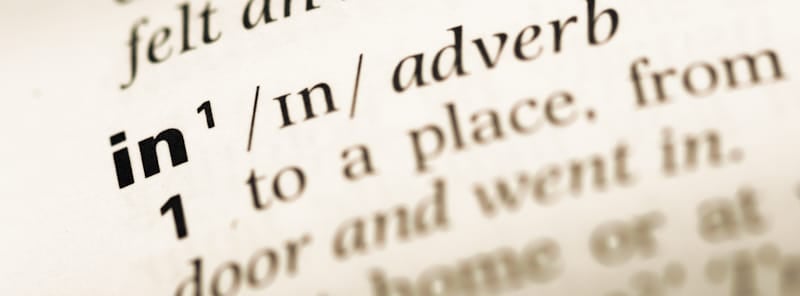If you are interested in understanding the rules about which words we have to capitalize on in a title, you are in the correct place.
Capitalization rules may vary depending on the style of title. Still, the rules of each style are very similar, or it is best to say that the rules are almost the same, and all the styles exclude the capitalization of prepositions in a title, like “in,” so let’s go over the rules.
What Must We Capitalize In A Title?
Many people struggle to create a title as they don’t know which words to capitalize in a title, but it is simple, starting with one of the two following forms: capitalizing each word or capitalizing the words that contain three or more letters.
There are basic rules we must follow if we want to capitalize appropriately, but first of all, it is essential to understand that there are four main capitalization styles, these are:
- MLA Style
- Chicago Style
- APA Style
- AP Style
Each one of these capitalization styles has minimum differences when we are referring to which words we are going to capitalize in a title, but no matter the style, we can use either the sentence case capitalization or the title case capitalization.
The Sentence Case Capitalization
The sentence case capitalization is one of the significant capitalization standards; with this, you only capitalize the first word of a sentence and the proper nouns; basically, the title is written as if it were a sentence. Many writers choose sentence case over title case, and this is because sentence case has more consistency, and most of the time, it is perceived as having an uninterrupted flow.
Based on the Sentence Case capitalization structure, it is not applicable to capitalize “In” in a title unless this is the first word of the title.
Let’s take a look at some examples of sentence case capitalization:
- Best technology magazines.
- Why is your pet bird not eating the food you’re feeding?
- Where to easily find worms.
Proper Nouns Capitalization in Sentence Case
For example,
- Best beaches to visit if you are in the Dominican Republic.
- Where to place the furniture in your living room.
- Where Zoe Saldaña spent her family time?
Title Case Capitalization
With title case capitalization, we need to capitalize all the words, but yes, there are some exceptions with the prepositions, articles, and coordinating conjunctions. Title case capitalization is mostly used for books titles, movies, songs, and other works. In the title case, all major words are capitalized, and minor words are lowercase. Title case is used for headlines in newspapers, blogs, and others; that’s why it is also known as headline style.
For the Title Case Capitalization, we noticed a rule for prepositions that excludes the capitalization of those. We are getting closer to our answer as “In” is a preposition for a place; it is not applicable to capitalize it.
Here are some examples of title case capitalization:
- Let’s Make a Sandwich
- The Last Day of the Spring.
- How to Cook Spaghetti.
Major Capitalization Styles
As we mentioned before, these are the MLA Style, the Chicago Style, the APA Style, and the AP Style. A valuable truth is that there is no single authoritative style guide when it comes to capitalizing headlines and titles, but the previously mentioned styles are used for certain types of writing. For example, the MLA style is used for academic papers, the Chicago style is used with in-depth writing, AP style is often used by new organizations, but this is only where the styles are usually used, it is not a rule or mandatory to use a particular style for a particular type of writing.
If you are feeling unsure of which style to use, the best way is to identify which method the course, teacher, or editor prefers so that you know, and then start using this specific style.
So, What Are the Rules to Capitalize a Title?
As we know now, that there are various capitalizing styles for titles, let’s go over the rules we need to follow if we are looking to become that expert we are trying to; let’s mention first the general rules, and then we are going to take a look at the rules of each style.
Here are some capitalization rules:
- Capitalize the first word in the title.
- Capitalize the last word in a title.
- Capitalize the important words in the title.
- Capitalize the pronoun “I.”
- Capitalize proper nouns: the names of specific people, places, organizations, adjectives derived from proper nouns, and sometimes things.
The main function of capitals is to provide the appropriate focus to particular elements within any group of people, places, or things, For example, we can speak of an island on the coast of the Dominican Republic, or we can be more specific by saying the Saona Island, which distinguishes it from every other island on earth.
This seems to be the rule that gets many people confused because they don’t know whether a word is a proper noun.
-
Capitalize family relationships when used as proper nouns.
For example, “Uncle Freddie” and “Aunt Tina” but leave it lower case when it is not referring to a person’s name like the following example: “We are going to visit my mother next Saturday.”
-
Capitalize directions that names; North, South, East, and Westweh n used as sections of a country, but not as compass directions.
For example, “The Atlantic Northeast” But not ” we are moving east to get close to you.”
-
Capitalize holidays, the days of the week, and the month of the year. Capitalize seasons only when used as a proper title.
For example, “We will attend the conference in the spring.”
“We celebrate Christmas on December 25th.”
-
Capitalize members of national, political, social, civic, and athletic groups.
For instance, “Phoenix Suns,” “Japanese,” “Democrats.”
-
Capitalize events and periods but not century numbers.
Examples would be “The Early Middle Ages” and “first century.”
-
Capitalize trademarks.
So that would be “Mazda,” “Corona,” “Samsung.”
The following rules for title capitalization apply to the four styles:
- Capitalize the first word in the title.
- Capitalize the last word in a title.
- Capitalize all major words(nouns, verbs, adjectives, adverbs, and pronouns)
- Do not capitalize articles or prepositions(the rule may vary depending on the style, but if the preposition is less than three letters, for sure will not be capitalized).
So now we have some references about things we can and things we can’t capitalize in general; let’s talk about grammatical rules to follow with the title capitalization.
We must capitalize the following:
- Nouns
- Pronouns including it.
- Verbs including the verb to be in all forms(is, are, was, has been, etc.)
- Adjectives
- Some conjunctions(Style-dependent)
- Long prepositions(Style-dependent)
Lowercase the following:
- Articles
- Some conjunctions(Style-dependent)
- Short prepositions(Style-dependent)
We have a major bone of connection with the prepositions; here is the thing, the AP style recommends capitalizing all prepositions of more than three letters; some examples are “with, around, behind.” But other styles suggest to lowercase all other prepositions that do not reach five or more letters but guess what, and there are some others that suggest not to capitalize a preposition, no matter if it is a bigger word like between o0r regarding.
Conclusion
So now we went over various of the rules that we have to follow, and we basically understand what is necessary to capitalize or not a word in a title, we can strongly answer the question, “Do You Capitalize “In” In A Title?”, the answer is easier to identify just by following the rules previously mention, as “In” is a preposition and each style excludes capitalization of prepositions or capitalization of prepositions with three letters or less, we have to say that, we do not capitalize”In” in a title, one thing to say is that for the answer, all rules and style are aligned, so there are no doubts about what we have to do next time when we need to capitalize a title.
Shawn Manaher is the founder and CEO of The Content Authority. He’s one part content manager, one part writing ninja organizer, and two parts leader of top content creators. You don’t even want to know what he calls pancakes.



